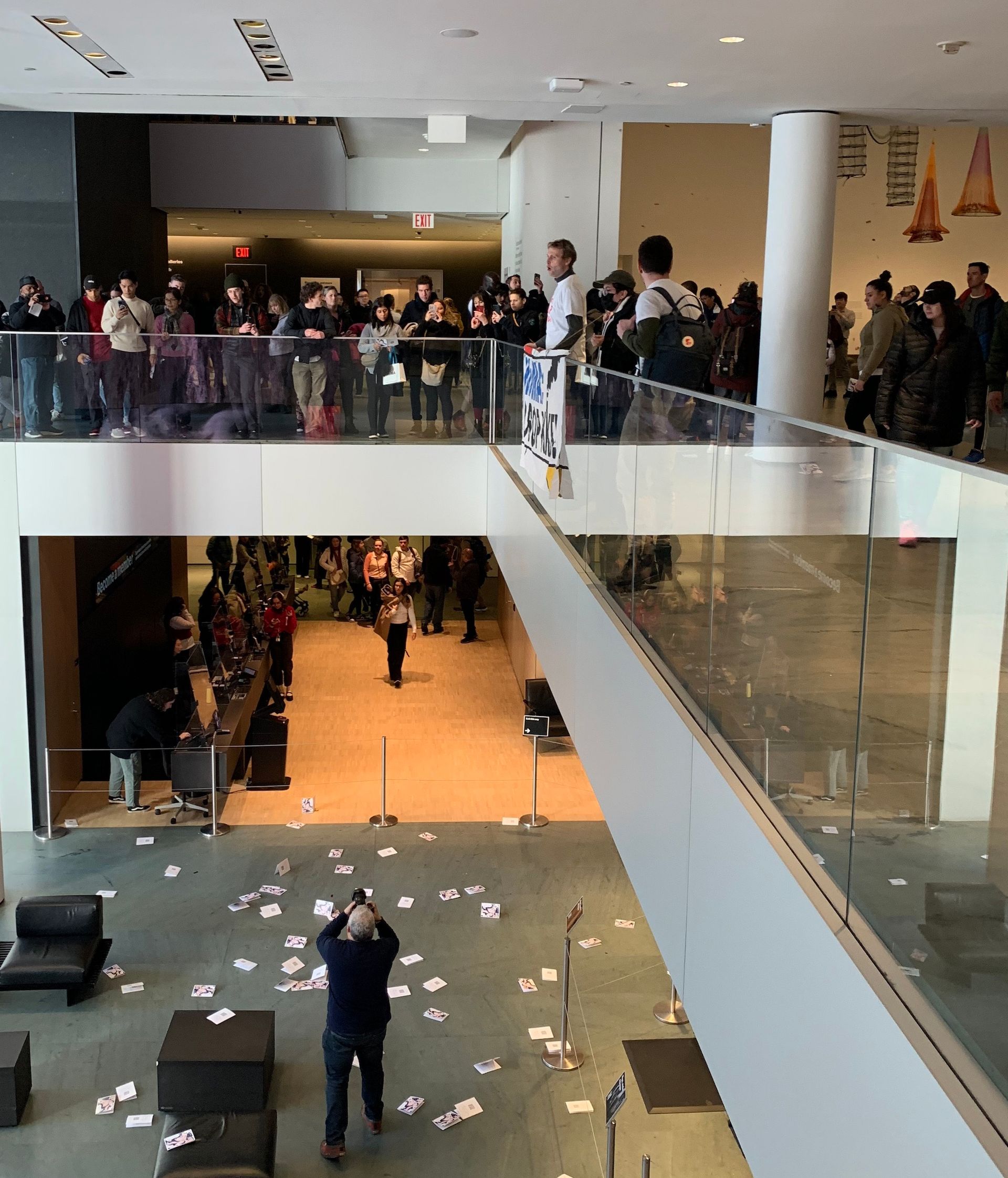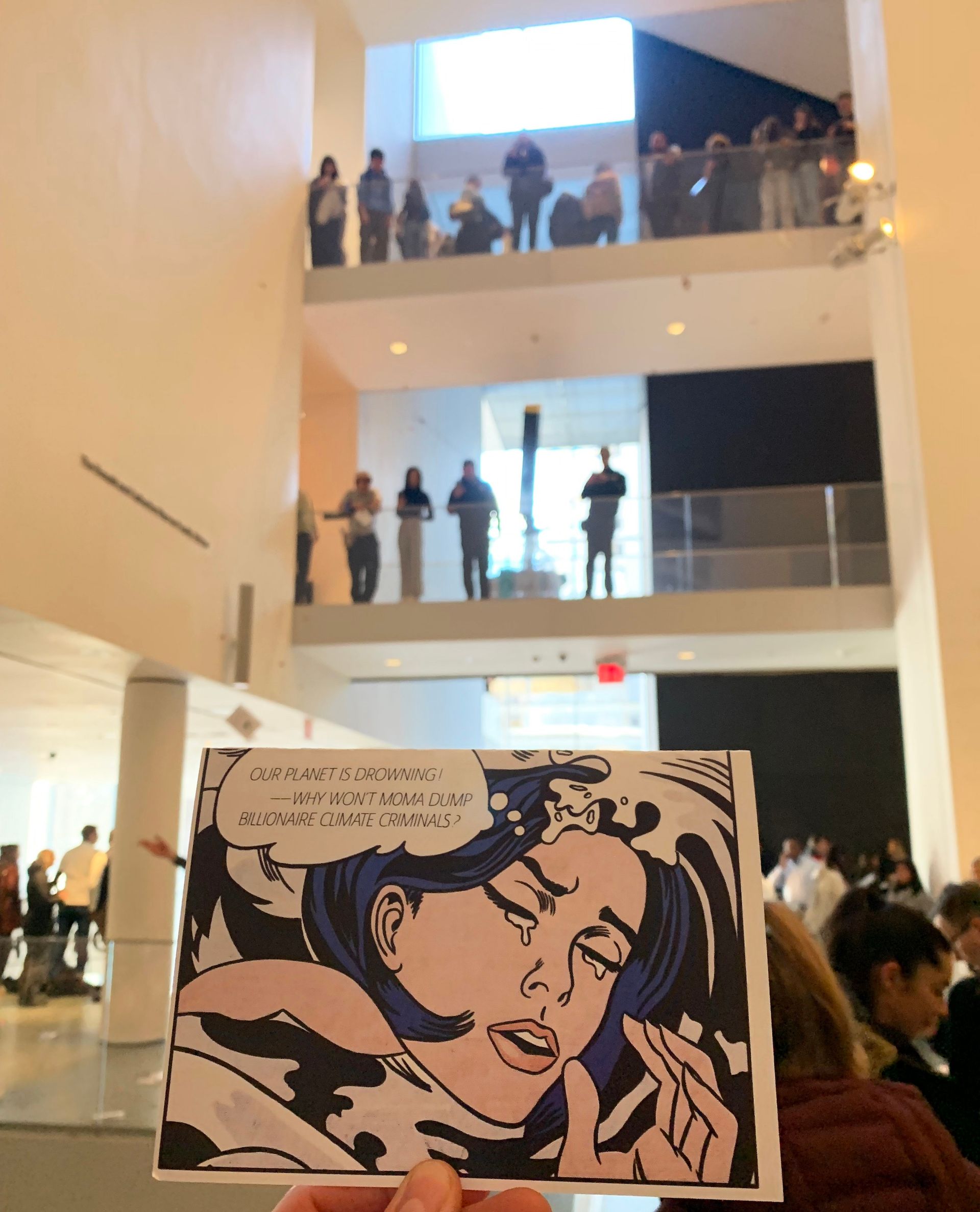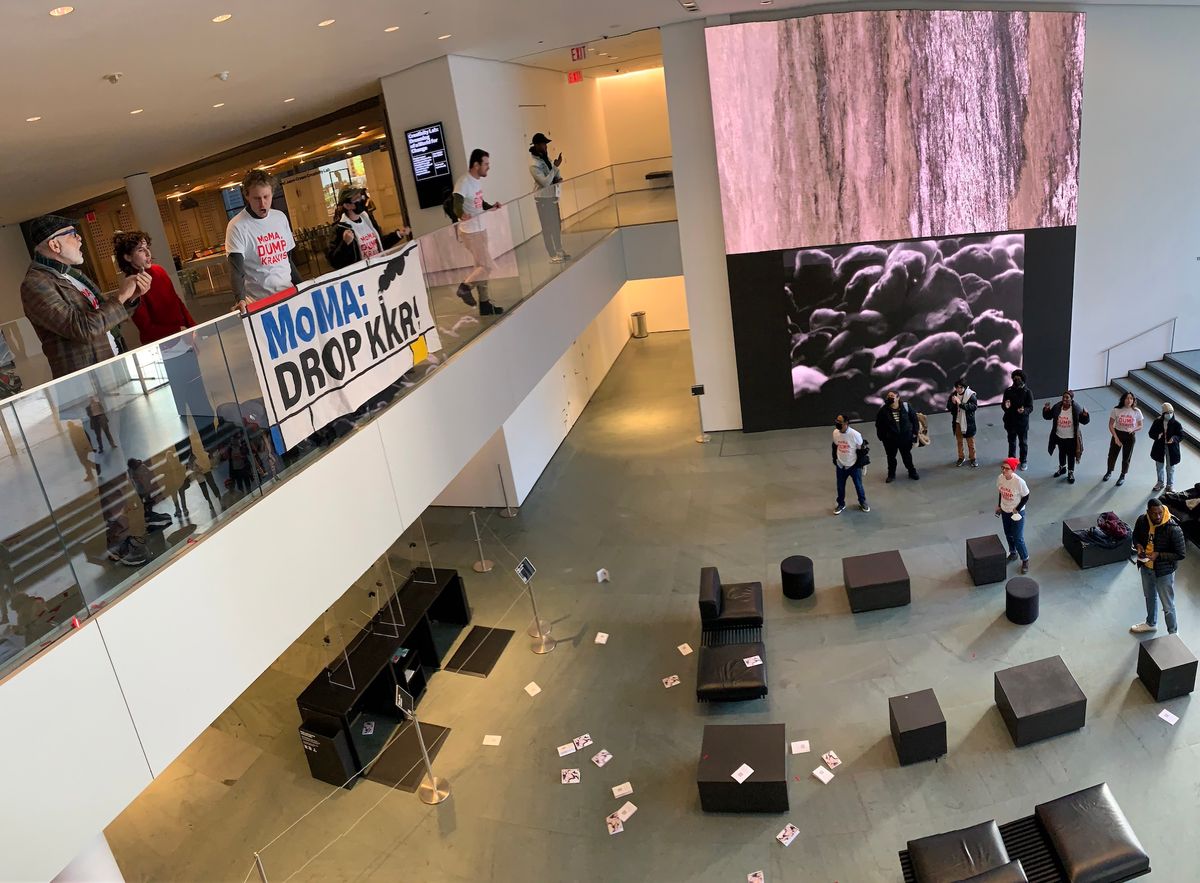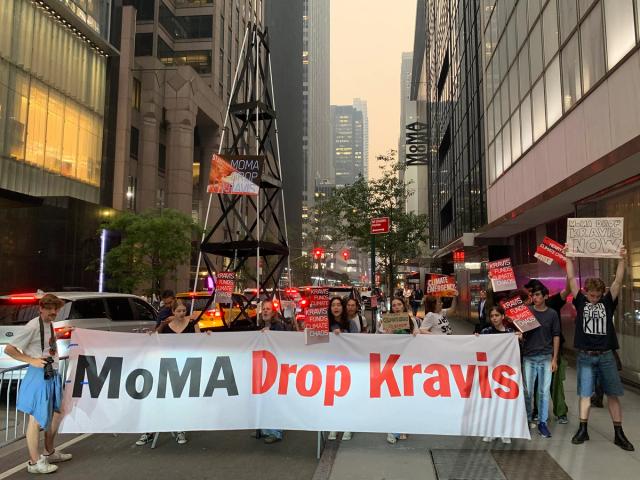Valentine’s Day visitors to New York's Museum of Modern Art (MoMA) were treated to a special experience on Wednesday (14 February) when, shortly after noon, protesters dropped confetti and mock greeting cards inside the museum’s central atrium in the latest action calling for the removal of board chair Marie-Josée Kravis. The protesters then unfurled a banner in the style of a Piet Mondrian painting that read “MoMA: Drop KKR”, a reference to the private equity firm of which Kravis’s husband, Henry Kravis, is a co-founder, co-chair and co-chief executive.
While tourists, schoolchildren and other museum visitors appeared confused and curious—many of them reading the protesters’ informational greeting cards while taking photos and videos—MoMA’s security staff was quick to close off entrances to the museum and cordon off the area around the protest. A recent string of protests over the museum’s ties to investors in fossil-fuel industries and Israeli military technology have seemingly put its security apparatus on high alert.
The protesters, numbering around 15 and sporting “MoMA, Dump Kravis” T-shirts, chanted slogans like “KKR, shame on you, we deserve a future too”. They represented a coalition of activist groups including New York Communities for Change, Climate Defenders, the Sunrise Movement, Planet Over Profit and Strong Economy For All. In speeches, they said: “We are here because MoMA claims to lead on sustainability while at the same time greenwashing the reputations of climate criminals.”

Protesters at the Museum of Modern Art call for the removal of board chair Marie-Josée Kravis over her and her husband's ties to the fossil-fuel industry Benjamin Sutton
The museum has an extensive sustainability section on its website and recently held an exhibition on green architecture. However, activists claim, these public-facing initiatives in support of sustainability are inconsistent with the museum’s sources of funding, most conspicuously in the form of support from Marie-Josée and Henry Kravis, after whom a gallery for performance and installation art is named.
“MoMA is an institution that, on its walls, appears to be moving in the right direction, with exhibitions increasingly championing Indigenous artists and artists of colour,” says Melanie Kruvelis, a member of Strong Economy For All. “But when it comes down to how they’re funded, it’s a different story. This is how private-equity firms like KKR whitewash their reputations.”
Henry’s net worth is around $11.5bn, according to Forbes, making him currently the 165th richest person in the world; Marie-Josée has served on MoMA’s board since 1994 and, prior to succeeding Leon Black as chair in 2021, had been board president from 2005 to 2018. The couple’s contributions to the museum have included a 1948 Henri Matisse painting valued at $25m, the Jasper Johns sculpture Painted Bronze (1960) and many other works. KKR is one of the five largest private-equity firms in the world and has invested heavily in the energy and fossil-fuel industries, with a portfolio that includes companies in the oil and gas sectors in the US, Canada, the UK, Europe and the Middle East.

One of the faux Valentine's Day cards dropped by activists at the Museum of Modern Art Benjamin Sutton
The greeting cards activists dropped in MoMA’s atrium—and, later, distributed to visitors waiting in line to enter the museum as it reopened—feature a classic Roy Lichtenstein image of a crying woman with a speech bubble that reads: “Our planet is drowning! Why won’t MoMA dump billionaire climate criminals?” Inside the cards is information about KKR’s business investments and New York public-sector pension funds’ investments in the firm, plus a link to a petition urging the museum to remove Marie-Josée from its board.
Many of the same organisations were involved in protests targeting MoMA’s affiliation with the Kravises in June and September of last year—the latter was timed to Climate Week activities coinciding with the United Nations General Assembly meeting, and the former staged during the museum’s annual Party in the Garden gala.
“MoMA has a love affair with some of the worst climate criminals,” Kruvelis says. “We want to see the Kravises off the gallery walls and off the board.”
Representatives for MoMA did not respond to requests for comment.



